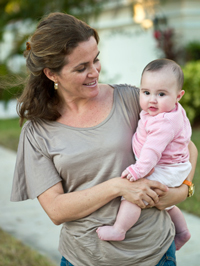Category: births
News Brief: Older Women, First Births

A recent NCHS Data Brief, drawing on data collected through the National Vital Statistics System, has received nationwide media attention for its findings on first-time births to older mothers. Data Brief No. 152, “First Births to Older Women Continue to Rise,” found significant increases over the past four decades in the average age of women Read More >
Posted on byIn the News
Consumer Reports Cites NHANES Research in Articles on Arsenic in Food, Juice An in-depth report in the November 2012 issue of Consumer Reports relies extensively on data collected by the National Health and Nutrition Examination Survey (NHANES). The report, “Arsenic in your food,” exposes the presence of arsenic, a potent human carcinogen, in nearly every food product category—particularly rice and rice-based Read More >
Posted on byAsk the Expert: Dr. Brady Hamilton
Data Brief 89, “Birth Rates for U.S. Teenagers Reach Historic Lows for All Age and Ethnic Groups,” published in April 2012, is available for download from the NCHS website. Birth rates for U.S. teenagers have reached historic lows for all age and ethnic groups, according to a recent NCHS Data Brief. We spoke with Read More >
Posted on byMilestones and Honors

Dr. Nathaniel Schenker Elected American Statistical Association 2014 President The American Statistical Association (ASA), the world’s largest community of statisticians, has elected NCHS’s Dr. Nathaniel Schenker to serve as ASA’s 109th president. Dr. Schenker will serve as president-elect in 2013 and become president on January 1, 2014. He formerly served as the association’s vice president. Read More >
Posted on by
